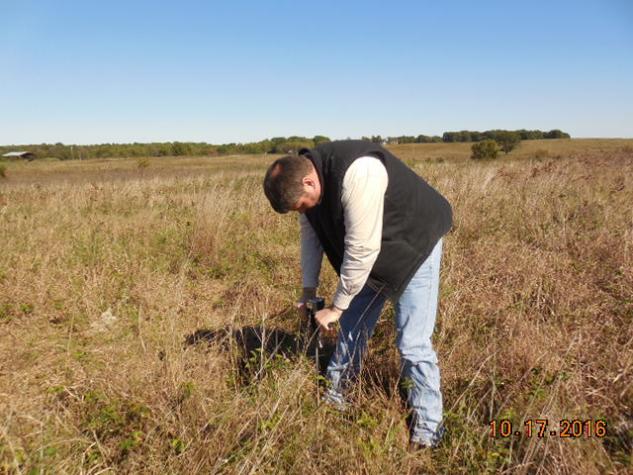CLEVER, Mo. – A soil test can help forage producers avoid the costly guessing game of how much fertilizer to buy and apply, says University of Missouri Extension agronomist Tim Schnakenberg. He recommends testing every three or four years.
“If you’re not soil testing, you’re already behind,” he said March 7 at the Christian County Livestock and Forage Conference in Clever, Missouri. Know what you need when you order fertilizer to avoid a shotgun approach.
Although 2023 fertilizer prices are down from last year, prices are still high enough that a soil test can pay off. See the MU Extension publication “Soil Sampling Hayfields and Row Crops” at extension.missouri.edu/publications/g9217.
Grazing and haying affect nitrogen levels differently.
Cows that graze pastures recycle nitrogen through the soil with their manure and urine. Legumes that grow in grazed pastures also add nitrogen to the soil. Hay, on the other hand, removes nutrients. “Your grazing management plan is a fertilizer plan,” Schnakenberg says.
Both how we graze and how we feed hay can serve as effective ways of fertilizing the livestock farm and ranch, he says. Move bunks, rings or roll-out areas around so that cows distribute manure to other parts of the farm. MU research has also confirmed that a well-planned rotational grazing system greatly helps manure distribution in pastures.
Soil tests can help prevent buying and applying unneeded fertilizer. That’s good for the checkbook and the environment, says Schnakenberg.
Schnakenberg offers several other tips to save money on fertilizer:
• Consider lime over fertilizer if soil pH is low. Lime application improves nutrient availability in the soil, which leads to more fertility from existing resources.
• Use manure from dairy or poultry operations to add needed nutrients, if available. Consider demand, trucking costs and the source of the litter.
• Reduce nitrogen loss by injecting manure and commercial sources into the ground instead of spreading on top of the ground.
• Use nitrogen stabilizers with commercial sources unless applied in cooler weather.
• Split applications can sometimes be a more efficient way to reduce losses. Check with your local extension agronomist for the most precise method of nitrogen applications on specific crops and forages.
Legumes such as clovers are also good long-term sources of nutrients. They fix nitrogen for grass hay crops. Incorporate these legumes into pastures to potentially eliminate the need for nitrogen. Legumes take time to reach their full potential, especially if broadcast over the winter or sowed in the spring.
When prices rise, apply phosphate and potash in the fall or early winter. There is little to no loss, and there may even be benefits from early application because there is time to work nutrients into the upper soil profile, where roots can fully access them when needed next year.
Check with your county extension center for availability of soil testing equipment for loan.
Photo
Taking soil samples
Taking soil samples for testing can save forage producers money by helping them apply the right amount of fertilizer. Photo courtesy MU College of Agriculture, Food and Natural Resources.
